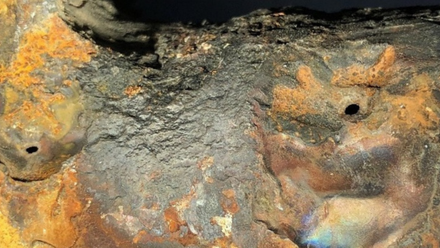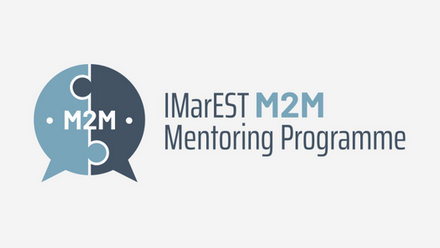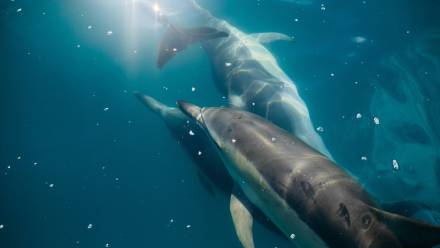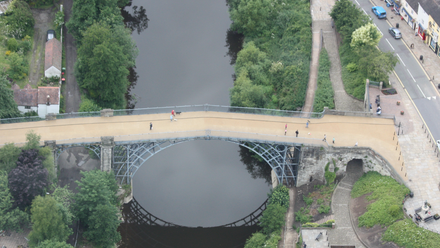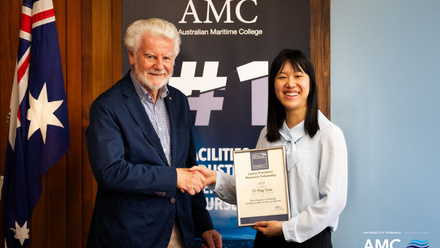111-year-old ship converted into ‘floating university’
The Norwegian tall ship Statsraad Lehmkuhl is making good progress as it continues its year-long voyage.
The Statsraad Lehmkuhl has experienced a literal Nice welcome after docking in the French city this June.
The arrival in Nice is one of 26 port destinations for the Norwegian vessel. This coincided with the third United Nations Ocean Conference (UNOC3) which was held between 9th and 13th June, an event that promoted the importance of protecting marine environments and sustainable ocean resources.
Having set sail from Tromsø, Norway on 22 April 2025, the Statsraad Lehmkuhl is charting the waters for a year, taking in three continents and locations across the North Atlantic, the Arctic and the Pacific, returning to Norway at the vessel's home port of Bergen in April 2026. Its initial six-week voyage to the destination of Nice was plotted via Iceland and Menorca, Spain.
The Statsraad Lehmkuhl's 12-month voyage's mission is to raise awareness of the part that the ocean has to play in building a sustainable future and comes in the wake of the successful One Ocean Expedition which occurred between 2021 and 2023.
A feat of engineering
The 111-year-old vessel has been converted into a modern day, multi-purpose research and teaching facility, functioning as what it calls ‘a floating university’, with much of the technology on board provided by Kongsberg Discovery. The ship welcomes researchers and students from colleges and higher education institutions, using modern research equipment to collate information on the current state of the world's oceans.
Facilities and equipment include a wet laboratory, drones, an AIS (automatic information system), a meteorological station, and a Seabird profiler to chart temperature, conductivity, pressure, and other parameters. Parts of the voyage are open to the general public, who can come and experience the Statsraad Lehmkuhl for themselves.
The first six weeks of the voyage have been judged a success, with Craig Donlon, ESA Ocean Scientist and expedition leader, announcing the completion of measurements from 29 oceanographic stations, “Sampling water at different depths down to 1,200m together with phytoplankton and zooplankton net samples.” Donlon added that these are connected with an array of measurements of the ocean currents, biology and meteorology, among others.
Donlon explained that the voyage has gained from satellite data charted from the Copernicus Sentinel-1, Sentinel-2 and Sentinel-3, as well as ESA’s (European Space Agency) SMOS missions: “(These) have been used, not only to guide our sampling plan in real time, but also by our students who have leveraged their full impact to explore the physics, biology and health of our oceans.”
More down-to-earth tools have also been used to discover what is in the oceans besides marine life. The Manta Trawl net, for example, has been used in different locations during the voyage to collect samples and particles from the water. The Manta Trawl replicates a Manta Ray's feeding methods of filtering water. But while the net collected zooplankton in the waters between Ireland and France, by the time the vessel reached the Portuguese waters, the net yielded plastic fragments.
Some good can come from the unwelcome discovery, however, as technology on board the Statsraad Lehmkuhl can locate the original source of the plastic fragments – one of the major aims of the voyage is to find out where the plastics accumulate and how they travel across the ocean.
Charlotte Cunci, a PhD candidate at the Mediterranean Institute of Oceanology at the University of Toulon, explained that the knowledge gleaned can then help change the regulation of plastics and reinforce it to protect marine areas.
Join the Ocean Plastics and Marine Litter Special Interest Group to discuss this and similar topics.
Tell us what you think about this article by joining the discussion on IMarEST Connect.
Image: Statsraad Lehmkuhl on the water. Credit: Kongsberg.

